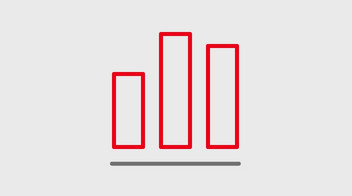Management approach and noise reduction target
Further reducing the impacts of rail transport noise on local residents is an essential prerequisite for a shift in the mode of transport towards rail. We are therefore continuing to work with the Federal Government on implementing our noise reduction target:
- In continuing the Federal Government’s noise remediation program, between 1999 and 2030, we aim to reduce rail transport noise on a total of 3,250 km of existing lines with about 800,000 residents. This corresponds to half of those affected.
- By 2050, we aim to have alleviated rail transport noise for all residents living near existing lines affected by rail transport noise. A prerequisite for achieving these targets is the adequate provision of funds for local noise remediation measures by the Federal Government in the noise reduction item of the Federal budget.
We are improving public acceptance of the shift in the mode of transport towards rail through our two-pillar noise reduction strategy, which focuses firstly on on-site measures (infrastructure) and secondly on at-source measures (vehicles).
- Since 2020, DB Cargo freight cars have been fully converted to quiet brakes. By 2025, our electric mainline locomotives for DB Cargo in Germany will also be running with quiet brake systems.
- By 2030, DB Cargo will have taken the older 232/233 series diesel locomotives with noisy gray cast iron block brakes out of service. The class 77 series, making up less than 2% of the operational performance of DB Cargo (based on weight-related ton-kilometers; Ltkm), will be the only locomotives still using gray cast iron block brakes.
- DB Long-Distance plans to replace all diesel shunting locomotives with particularly quiet and climate-friendly hybrid shunting locomotives. Noise reduction therefore simultaneously contributes to climate protection aims. As a result of delivery bottlenecks, the quiet hybrid shunting locomotives are to be delivered by 2028.
Together with the German Center for Rail Transport Research (DZSF) and our partners from industry, we intend to continue to advance the research and development of noise and vibration reduction measures for track infrastructure and rolling stock.


